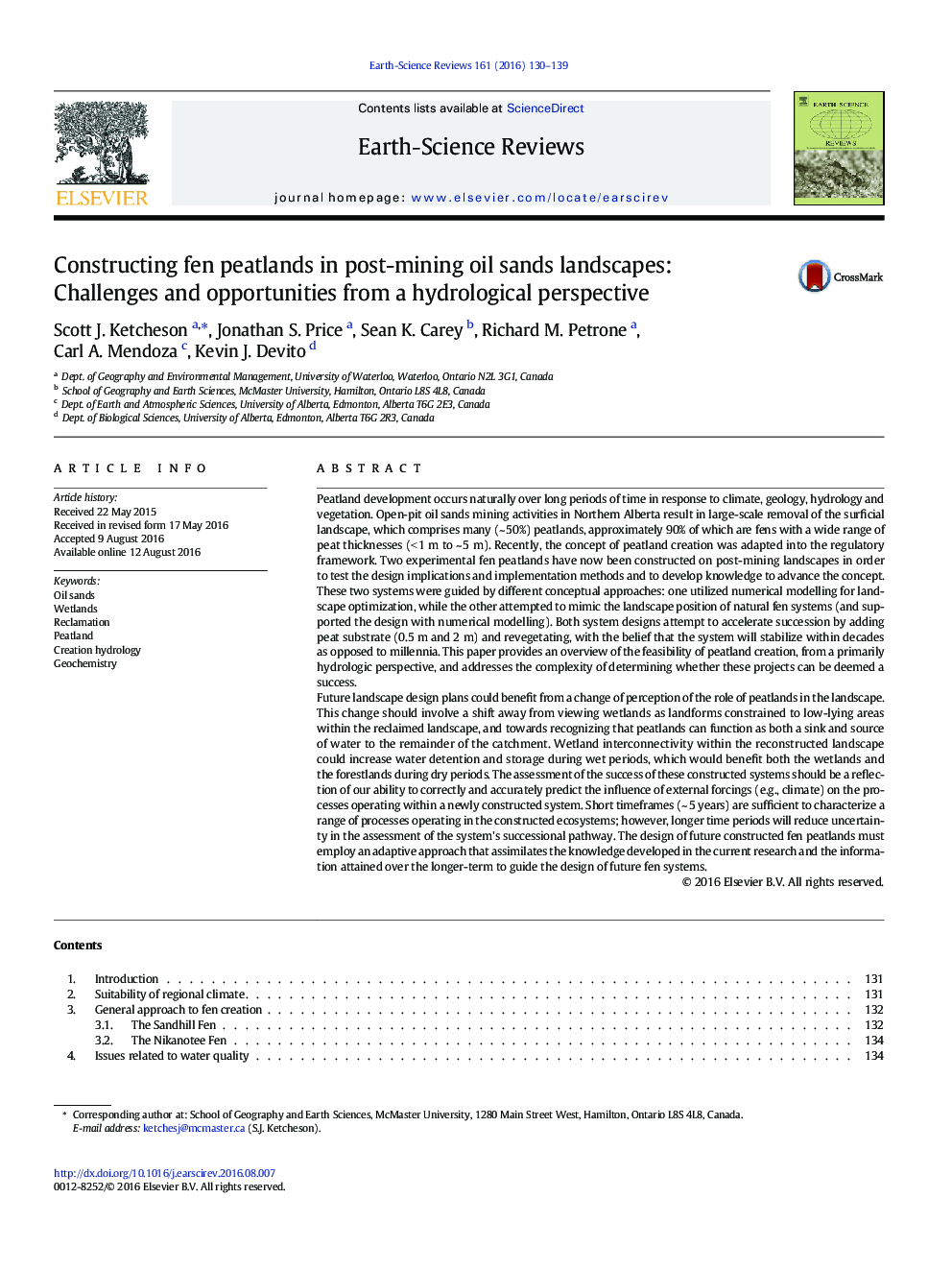| Article ID | Journal | Published Year | Pages | File Type |
|---|---|---|---|---|
| 6442786 | Earth-Science Reviews | 2016 | 10 Pages |
Abstract
Future landscape design plans could benefit from a change of perception of the role of peatlands in the landscape. This change should involve a shift away from viewing wetlands as landforms constrained to low-lying areas within the reclaimed landscape, and towards recognizing that peatlands can function as both a sink and source of water to the remainder of the catchment. Wetland interconnectivity within the reconstructed landscape could increase water detention and storage during wet periods, which would benefit both the wetlands and the forestlands during dry periods. The assessment of the success of these constructed systems should be a reflection of our ability to correctly and accurately predict the influence of external forcings (e.g., climate) on the processes operating within a newly constructed system. Short timeframes (~Â 5Â years) are sufficient to characterize a range of processes operating in the constructed ecosystems; however, longer time periods will reduce uncertainty in the assessment of the system's successional pathway. The design of future constructed fen peatlands must employ an adaptive approach that assimilates the knowledge developed in the current research and the information attained over the longer-term to guide the design of future fen systems.
Related Topics
Physical Sciences and Engineering
Earth and Planetary Sciences
Geology
Authors
Scott J. Ketcheson, Jonathan S. Price, Sean K. Carey, Richard M. Petrone, Carl A. Mendoza, Kevin J. Devito,
